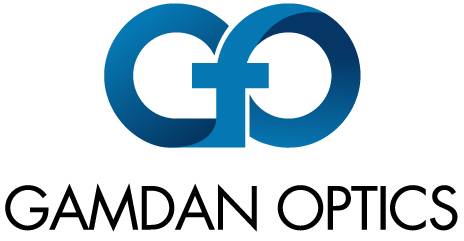OPO Process and How They Work
Optical Parametric Oscillators
THE PROCESS AND HOW THEY WORK
INTRODUCTION TO OPOs
An Optical Parametric Oscillator (OPO) is a light source, and a feature of optical parametric oscillators is wavelength flexibility. OPOs can deliver wavelengths that may be difficult or impossible to achieve with lasers. Not only can an OPO be built to work at a specified wavelength, but also many OPOs can be tuned--the user can scan the wavelength.
In a laser, stimulated emission from an energized laser medium amplifies light. The laser medium is usually energized by a separate electrical or optical power source. An OPO is different: a nonlinear crystal converts light (without storing the energy) from what is called a pump beam into two beams of longer wavelengths, called a signal beam and an idler beam. The name idler, by convention, refers to the generated beam with a longer wavelength, and the signal refers to the other generated beam, the one with a wavelength shorter than the idler and longer than the pump. The OPO pump beam generally needs to be a high-quality laser beam itself. Consequently, an OPO is more expensive and complex than just using a laser directly, but an OPO offers the advantage of wavelength selection or tunability that enables exciting applications, for example spectroscopy and trace gas detection. Specialized military and communications applications can also use OPOs. A good overview of OPOs and the types of OPOs can be found in the RP Photonics Encyclopedia.
HOW OPOs WORK AND TYPES of OPOs
In an OPO, the pump, signal, and idler waves interact in a transparent nonlinear crystal. Some such crystals are lithium niobate (LiNbO3), magnesium doped lithium niobate (Mg:LiNbO3), potassium titanyl phosphate (KTP), lithium triborate (LBO), beta barium borate (BBO), and zinc germanium phosphate (ZGP). In an OPO’s nonlinear crystal the pump light’s electric fields drive some of the crystal’s electrons to oscillate. If the right design choices are made, the reaction of the crystal’s electrons to the pumps beam’s electric fields is not just to oscillate at the frequency of the pump light, but to also have some components of their oscillation at the signal and idler frequencies. So, this will generate the emission of signal and idler light. Even better, it will amplify any light at the wavelength of the signal or idler that is passing through the crystal in the proper direction. As the signal and idler waves amplify, the pump wave weakens, and this process is effective if mirrors are placed around the crystal to enhance the light fields in the crystal. The presence of mirrors around the nonlinear crystal forces the reflected light to repeatedly pass through the crystal, making the system an oscillator. Otherwise, without the mirrors it would just be an optical parametric amplifier—an OPA.
How an OPO works is perhaps less intuitive than how sum frequency generation works in nonlinear crystals. Second harmonic generation is a special type of sum frequency generation that is used in many products. Here we’ll compare how sum frequency generation works to how OPOs work to explain more about both processes. They have a lot in common!
Consider an example of sum frequency generation where there are two input beams. One is infrared (IR) light with a wavelength of 1064 nm, and the other is green light with a wavelength of 532 nm. Sending these two beams through a nonlinear crystal-like LBO can generate a third beam, an output ultraviolet (UV) beam. In this example, the output UV wavelength is about 355 nm. This type of interaction is shown in Fig. 1.
Figure 1. Example of a sum generation process in a nonlinear crystal that combines photons from two beams of light to make a sum-frequency beam with a shorter wavelength, and which has more energetic photons. Here red plus green converts to blue (or ultraviolet). The crystal is typically temperature controlled.
The photon energies of the IR and green beams sum to the photon energy of the UV beam, so energy is conserved. To generate UV light effectively, all three of the interacting beams must overlap reasonably well. Also, the polarizations of the beams, the crystal orientation, and the crystal temperature must be carefully selected. Thinking of the beams of light as waves, the generated UV wavefronts need to be boosted constructively throughout the crystal. When there is this cumulative growth of the UV light waves going through the crystal, all adding in phase, the crystal is said to be phase matched, and this condition is needed for efficient generation of UV power. In general, phase matching is needed to optimize any nonlinear process, not just UV generation.
The process in an OPO is very much the same as the process in sum frequency generation, except with the whole description run in reverse! This is shown in Fig. 2.
Figure 2. Example of an optical parametric process in a nonlinear crystal that converts each photon from a short wavelength beam into two photons, each less energetic than the pump photons. Here blue (or ultraviolet) converts to red plus green. The crystal is typically temperature controlled.
In this specific example, a UV pump beam with a wavelength of about 355 nm goes into an LBO crystal and generates two beams, a 532 nm signal beam, and a 1064 nm idler beam. All the constraints on having the beams overlapping and having phase matching still apply. The photon energy of the UV beam still equals the sum of the IR and green beams’ photon energies, so energy is again conserved.
Stay tuned and we will be looking next at the different types of OPOs.
DR. WILLIAM GROSSMAN, AUTHOR
Will Grossman is a consultant retained by GAMDAN, and his role is to help our customers be more successful with nonlinear optics. His technical expertise includes laser design, nonlinear optics, and laser reliability. Dr. Grossman’s laser designs are used around the world in commercial products. More on the author can be found here.



